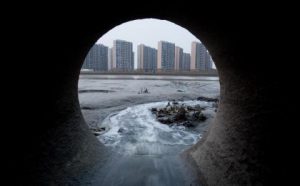Since China privatised its state-owned housing stock in the 1990s, setting off a building boom, property developers have worked on the principle of “build it and they will come”. Many city governments took that a step further, erecting new districts with government offices and university campuses on the principle of “build it and make them come".
In many big cities, like Beijing and Shanghai, that policy has worked well. Such places have lots of jobs and attract millions of migrants, both rural workers and white-collar workers, from smaller towns and cities. Demand in China’s largest cities outstrips supply, which is why house prices there can be incredibly high. But the situation is quite different in smaller cities, which have weaker economies and fewer jobs.
Many critics of China’s construction boom fail to appreciate the enormous population pressures it is facing. Every year, China’s cities are projected to absorb more than 20 million new inhabitants — roughly the population of Australia. And as China’s existing urbanites grow richer, they are demanding bigger and better apartments. Unfortunately, China’s current modern housing stock – defined as homes with individual bathrooms and kitchens — is only around 180 million units, well below the existing 220 million urban households.
The result is that around 40 million households still live in shoddy, substandard residences — well over 100 million people. Many of these are migrant workers living in slum housing or sleeping in tents on the building site. Another 100 million or so migrant workers live in factory dormitories. But as wages rise, more and more will want to move into their own flats. Over the coming decades, China will need to build millions of affordable homes for these people.
The central problem is the mismatch between housing demand and supply. China’s small cities have an oversupply of housing that no one wants, whereas big cities have a lack of affordable homes. Since 2010, the government has addressed the shortage of affordable homes in big cities by regulating demand for luxury flats and by building more social housing. But it has only recently begun turned its attention to the unsustainable building boom in small cities, which has left China littered with empty developments—the so-called “ghost cities.”
Ghost cities: the debt burden
In a recent editorial, the People’s Daily newspaper railed against the wasteful national trend for building new cities: “Empty towns and ghost cities are redundant constructions that don’t generate much economic benefit …They are a huge waste of resources which pile debt pressure onto local governments.” Citing data showing that 144 cities in only 12 provinces are planning to build over 200 new towns, it blamed officials for chasing GDP growth.
Housing and construction data support this analysis. Recent government surveys show house prices rising in virtually all of China’s 70 major cities—hardly an obvious sign that supply has exceeded demand. Instead, the oversupply problem is concentrated in 218 prefecture-level cities, according to analysis by research firm GaveKal Dragonomics. These experienced much stronger construction growth than other cities over the past decade, especially after the launch of China’s economic stimulus in 2008.
Population data explain why this is a problem. Between 2000 and 2008, these small cities gained an average of 12 million new inhabitants per year, thanks to natural population increases and migration. But that slowed to just 4 million per year in 2008-12. The biggest cause was a fall in migrants arriving from other cities—precisely the people who can afford to buy urban housing, which is beyond the reach of most rural migrants.
Ghost cities filling up
Many small cities took their lead from big cities, which need to build new districts to accommodate swelling populations and demand for better housing. Their model is China’s original “ghost city”: Shanghai’s Pudong area. When the US economist Milton Friedman visited in 1998, a year after the death of Deng Xiaoping, he slammed Shanghai’s glittering new business district as “a statist monument for a dead pharaoh on the level of the pyramids”. At the time this seemed a fair point – the occupancy rate in its new office towers was just 35%.
Yet within a decade Pudong’s skyscrapers were full and it had millions of residents. Shanghai’s government forced all the big state-owned banks to move their city headquarters into the empty district and instructed them to roll over loans made to the struggling property developers. Once the numbers of businesses and workers reached a critical mass, Pudong flourished.
A similar logic has filtered down to officials nationwide. In big cities, it can work. Take Zhengzhou, the capital of Henan province and home to what is often called China’s largest ghost city. Zhengzhou’s new district, Zhengdong New Area, covers 115 square kilometres and contains a business district, new headquarters for the provincial government, a high-speed rail transport hub and 15 university campuses.
Since 2010, when satellite photographs were published showing hundreds of empty new apartment blocks and public buildings, Zhengdong has received a barrage of criticism. But the project is not as ill-conceived as its critics maintain. Zhengdong was designed to give Zhengzhou—the congested, commercial centre of a teeming province of 95 million people—the modern infrastructure it needs to expand effectively. Three years later there are signs of life in Zhengdong: the university campuses are filling up, government officials are behind their desks, and thousands of families have moved into new homes. A new subway system takes residents from Zhengdong into the old city.
The lesson from Zhengdong and any number of other big cities across China is that, given time, empty districts can take off. But in small cities, this development model is simply inappropriate. Places like Ordos in Inner Mongolia—home to an empty city in the Gobi desert—do not have the same population pressures or economic potential as big cities like Zhengzhou.





